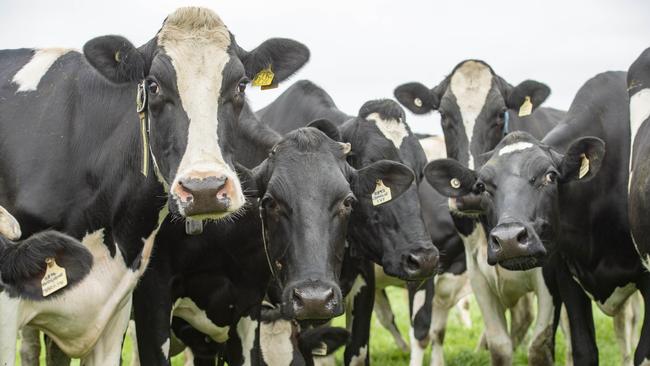Western Australian Dairy Farm Monitor shows profit cut in half
Dairy farmers say they’re only half as profitable as the previous season. Now there are statistics to back up those claims.
Average earnings before interest and tax for West Australian dairy farmers were slashed in half last season, according to new data.
Profitability was at its lowest ebb in the decade-long history of the Western Australia Dairy Farm Monitor Project, researchers say, with input costs largely to blame.
The 2023-24 report conducted by Dairy Australia showed the average WA farmgate earnings before interest and tax was $0.99 per kilo milk solids last season, less than half the $2.65 per kilo milk solids figure in the 2022-23 financial year.
It meant the average overall dairy farm earnings before interest and tax went from a 2022-23 high of $819,000 to $350,000 last season for the surveyed WA farms.
Average net farm income for participating WA farms dropped from a healthy $621,000 in 2022-23 to only $90,000 last financial year.
Regional Finance Hub director Sarah Lang worked with Dairy Australia to compile the data.
She said the latest WA Dairy Farm Monitor results “were significantly affected by seasonal conditions resulting in the lowest earnings before interest and tax profitability in the 11-year history of the project.”
“In 2023/24, 69 per cent of farms made a profit — on earnings before interest and tax,” Ms Lang said.

“After accounting for finance and lease costs only 49 per cent achieved a positive net farm income.
“While Western Australia enjoyed a higher milk price, the main driver impacting profitability was higher input costs, mainly purchased feed costs and a lower livestock profit due to continued low beef prices.”
Much like other dairy regions, WA feed costs led the way in eating into farmgate profits last season at $5.29 per kilo milk solids, while general overhead costs tallied at $3.78 per kilo, fertiliser costs were $0.69 per kilo and shed costs were $0.36 per kilo milk solids.
“A dry winter and spring hindered farmers’ ability to produce home grown feed,” Ms Lang said. “A lack of rainfall increased the requirement for purchased fodder and drove hay prices to a high of $410 a tonne due to limited supply.”
Seasonal conditions were drier last financial year in WA, compared to a bumper 2022-23 season, with the average rainfall for surveyed farms falling from 863mm in 2022-23 to 674mm in 2023-24.
Some destocking by participating farms took place as a result of the dry conditions and need for feed with the average herd size of monitored farms sliding from 490 cattle to 478 cattle over the same surveyed period.
WA Farmers dairy president Ian Noakes said the 2023-24 figures were unsurprising, with concerns the trend had exacerbated into the 2024-25 financial year.
“At least in the previous season, the milk price was stronger. Now we have rising input costs with a lower return at the farmgate,” he said.
“Most input costs have risen into this season, with the exception of fertiliser, which has eased back. I understand the same problems are being felt in other states — the wider Australian dairy industry is under strain from a weak farmgate price that doesn’t reflect the cost pressures most farmers have to work with.”





